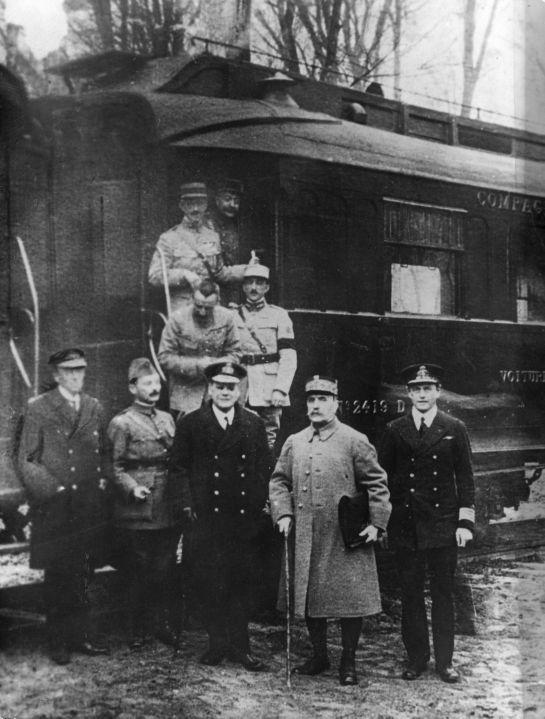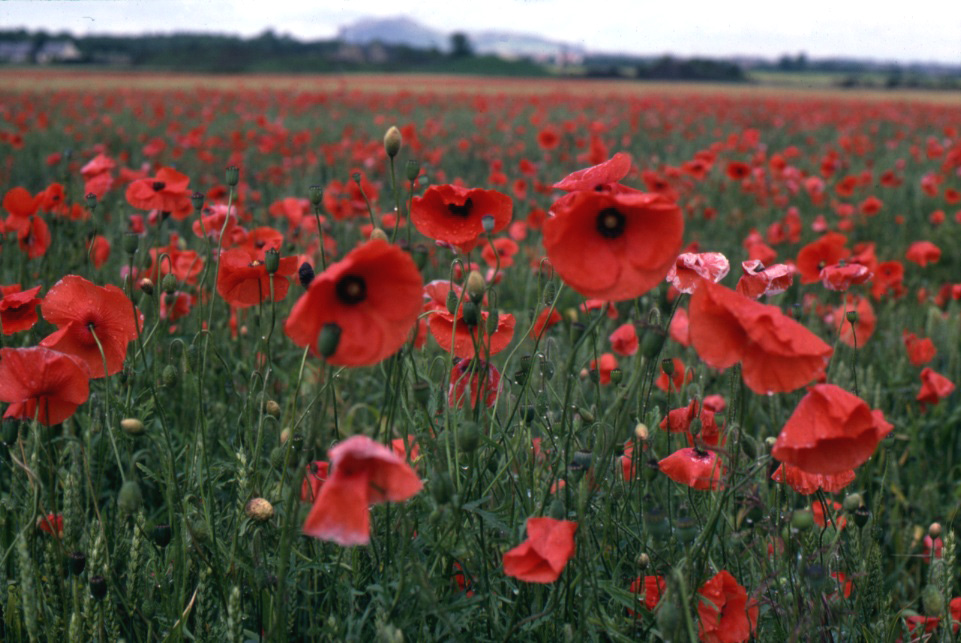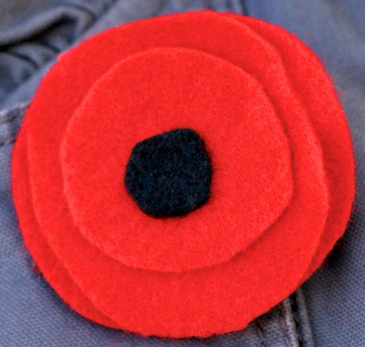|
The War to End All Wars
 NOVEMBER 11, 1918 - At 11:00 a.m. the Great War, which began on July 28, 1914, came to a close when an armistice treaty between the Allies and the Central Powers was signed inside a railway car in the Compiègne Forest in France. Known today as World War I, the Great War was triggered by the assassination of Archduke Franz Ferdinand of Austria, the heir to the throne of Austria-Hungary. Within weeks the major powers of the world were at war. More than 70-million military personnel were mobilized, and causalities are estimated to be in excess of 15 million. By the end of the war, four major imperial powers -- the German Empire, the Russian Empire, Austro-Hungarian Empire, and the Ottoman Empire -- were defeated. While Germany and Russia lost significant amounts of territory, the Austro-Hungarian Empire and the Ottoman Empire ceased to exist entirely. In their place several smaller European states were created in central Europe. Following the war the League of Nations, a brainchild of U.S. President Woodrow Wilson, was created in hopes of preventing a similar war from ever breaking out again. Unfortunately feelings of European nationalism, spawned by the breakup of empires, and anger toward Germany led to the breakout of World War II only 20 years later. NOVEMBER 11, 1918 - At 11:00 a.m. the Great War, which began on July 28, 1914, came to a close when an armistice treaty between the Allies and the Central Powers was signed inside a railway car in the Compiègne Forest in France. Known today as World War I, the Great War was triggered by the assassination of Archduke Franz Ferdinand of Austria, the heir to the throne of Austria-Hungary. Within weeks the major powers of the world were at war. More than 70-million military personnel were mobilized, and causalities are estimated to be in excess of 15 million. By the end of the war, four major imperial powers -- the German Empire, the Russian Empire, Austro-Hungarian Empire, and the Ottoman Empire -- were defeated. While Germany and Russia lost significant amounts of territory, the Austro-Hungarian Empire and the Ottoman Empire ceased to exist entirely. In their place several smaller European states were created in central Europe. Following the war the League of Nations, a brainchild of U.S. President Woodrow Wilson, was created in hopes of preventing a similar war from ever breaking out again. Unfortunately feelings of European nationalism, spawned by the breakup of empires, and anger toward Germany led to the breakout of World War II only 20 years later.
|
|
In Flanders Fields

Lieutenant-Colonel John McCrae, a Canadian Medical Officer who fought during the First World War, is best remembered today for a poem he authored in May 1915. While serving at a medical station near Ypres, Belgium, an area traditionally called Flanders, McCrae witnessed some of the fiercest fighting of the war. On the day following the death of his friend and fellow soldier Lt. Alexis Helmer, McCrae wrote his now famous work as an expression of his anguish over the loss of his friend and a reflection of his surroundings -- wild Poppies growing amid simple wooden crosses marking makeshift graves. His poem was first published later that year in the British magazine Punch. The words of his poem expressed the fear of many soldiers who fear that they will be forgotten and that their death will have been in vain. In November 1918 an American teacher named Moina Michael read McCrae's poem and made a personal pledge to always "wear a red poppy of Flanders Fields as a sign of remembrance and as an emblem for keeping the faith with all who died." Others followed suit and soon the red poppy became a symbol of remembrance of those who have died in war. Each year, in Canada and throughout the Commonwealth states of the United Kingdom, red poppies are worn during the week leading up to Remembrance Day (Veteran's Day in America) in honor of those who have died.
In Flanders fields the poppies blow
Between the crosses, row on row,
That mark our place; and in the sky
The larks, still bravely singing, fly
Scarce heard amid the guns below.
We are the Dead. Short days ago
We lived, felt dawn, saw sunset glow,
Loved and were loved, and now we lie
In Flanders fields.
Take up our quarrel with the foe:
To you from failing hands we throw
The torch; be yours to hold it high.
If ye break faith with us who die
We shall not sleep, though poppies grow
In Flanders fields.
|
|
"War is an ugly thing, but not the ugliest of things. The decayed and degraded state of moral and patriotic feeling which thinks that nothing is worth war is much worse. The person who has nothing for which he is willing to fight, nothing which is more important than his own personal safety, is a miserable creature and has no chance of being free unless made and kept so by the exertions of better men than himself."
-- John Stuart Mill
|

Here at Hirschi Law Group we have vowed to always remember those who have died for our freedom by wearing the red poppy of Flanders Fields this Veterans Day. If you cannot find a red poppy to purchase check out this free tutorial on how to make your own no-sew red poppy at the blog PagingSupermom.
|
|